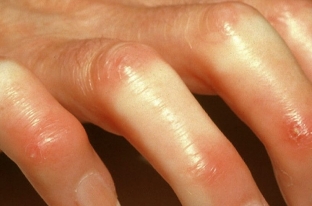Localized (limited) scleroderma — a chronic connective tissue disease with a predominant lesion of the skin and underlying tissues, characterized by the appearance of foci of sclerosis against the background of inflammatory phenomena (erythema, edema) and the subsequent addition of atrophy and hypo/hyperpigmentation of the skin. The disease can occur at any age, it is characterized mainly by localized foci of chronic inflammation and fibrous-atrophic lesions of the skin and mucous membranes. What are the causes of systemic scleroderma? What can provoke the development of the disease, find out at estet-portal.com.
What are the likely causes of systemic scleroderma?
In recent decades, there has been an increase in the number of patients with limited scleroderma. Clinical manifestations of scleroderma, read more on estet-portal.com. Localized scleroderma is the most common form of scleroderma in children and adolescents, with an incidence of 1:37,000. Girls are 3 to 4 times more likely to develop the disease than boys.
One of the causes of systemic scleroderma in recent years is a change in the body's immunoreactivity due to numerous professional and household allergens, widely used antibiotic therapy. In pathogenesis, the main importance is given to immune system dysfunction, metabolic disorders of connective tissue components and microcirculation.
The fact that systemic scleroderma is caused by immune disorders finds its evidence in high levels of pro-inflammatory cytokines, the effectiveness of selective immunoactive agents in the development of the disease.
Defects in humoral and cellular immunity contribute to the formation of autoantibodies, which play an important role in patients with generalized limited scleroderma, being a relative cause of systemic scleroderma.
In limited scleroderma, collagen metabolism disorders and changes in the vascular endothelium are observed. In all forms of limited scleroderma, a chronic inflammatory fibrosing reaction of the connective tissue develops. With limited scleroderma, there are also disorders in the metabolism of collagen and changes in the vascular endothelium.
Chemicals capable of being potential cause of systemic scleroderma:
- Scleroderma-type skin changes can be caused by toxemia;
- Possible causative chemicals include vinyl chloride, perchlorethylene, trichlorethylene and other organic solvents, pesticides and epoxy resins;
- drugs that can cause these skin changes include bleomycin, carbidopa, pentazocine, cocaine and appetite suppressants, and paraffin (after injection).
Main clinical manifestations of systemic scleroderma
Patients may complain of itching, soreness, tingling and tightness of the skin, limited movement in the joints, changes in volume and deformation of tissues in the affected areas of the body. Further, immunological reactions are observed, which later manifest themselves as the formation of a focus of the disease. Foci of scleroderma in their development go through three stages: erythema and edema, sclerosis (hardening) and atrophy of the skin.

In typical cases, the disease begins with the appearance of pink, pinkish-lilac, liquid or hyperpigmented spots on the skin, rounded and / or strip-shaped, sometimes with edema.
In the stage of sclerosis, foci of compaction and thickening of the skin of ivory color with a smooth surface and a characteristic waxy sheen are formed from the spots. Along the periphery of the foci, an inflammatory corolla of lilac or pinkish-purple color is often observed, which is an indicator of the activity of the process. In places of damage, the skin does not gather well into a fold, sweating is reduced or absent, the functions of the sebaceous glands and hair growth are disturbed.
Over time, skin hardening may decrease. At the next stage, skin atrophy develops in the foci of scleroderma, telangiectasias appear, persistent hyper- or hypopigmentation. In addition to the skin, the underlying tissues may be involved in the pathological process: subcutaneous tissue, fascia, muscles, bones, less often — other tissues and organs. Spontaneous resolution of the disease is possible, which is likely after the elimination of the causes of systemic scleroderma.
Thus, in order to prevent the development of scleroderma, it is important to prevent the effects of the above substances on the body, as well as increase immunity and rationally use antibiotic therapy, which can cause systemic scleroderma.







Add a comment